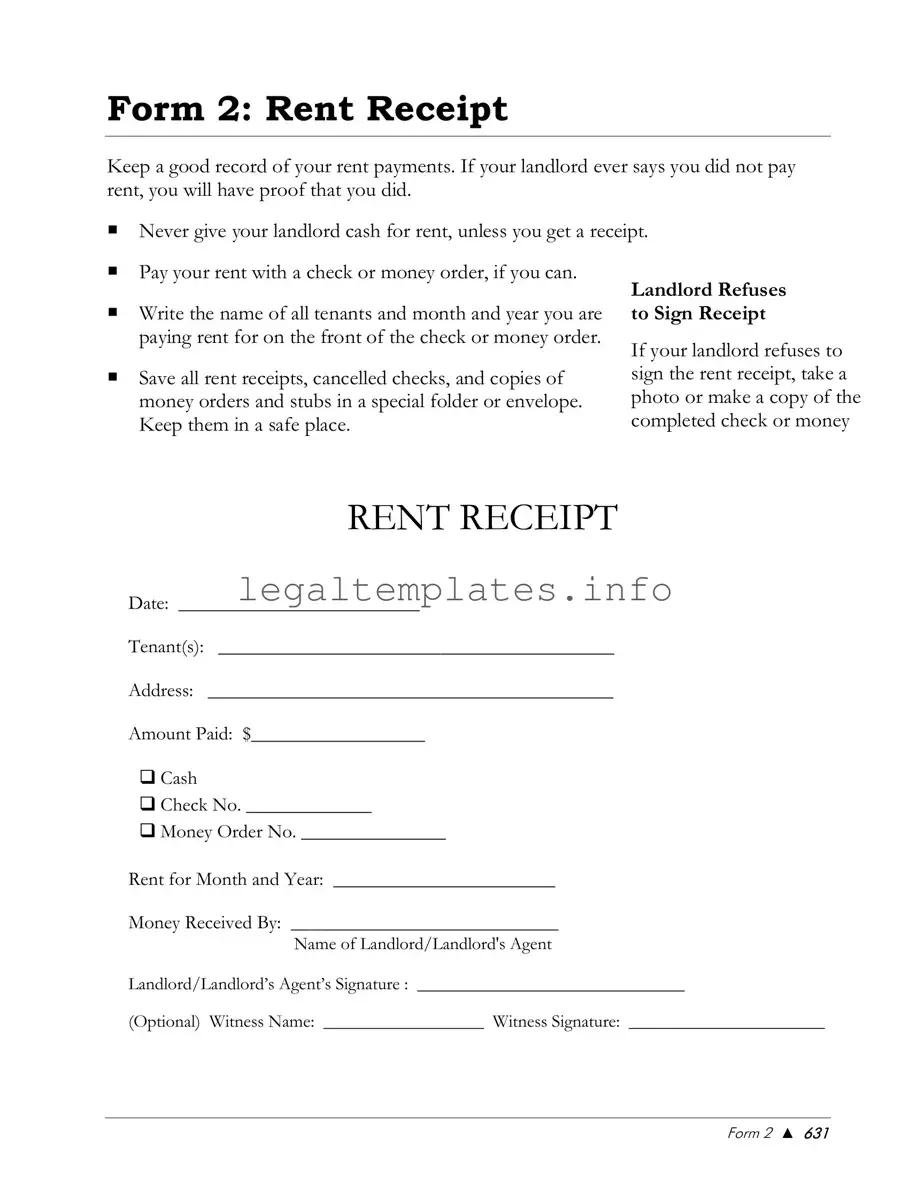The Lease Agreement is closely related to the Rental Receipt form as it outlines the terms and conditions under which a tenant can occupy and use the premises for a specified period. While the Rental Receipt serves as proof of payment for a particular period, the Lease Agreement legally binds the tenant and landlord to their respective obligations, such as payment amounts, payment dates, and the duration of the lease.
The Security Deposit Receipt is another document that bears similarity to the Rental Receipt. It acknowledges the receipt of the security deposit from the tenant, serving as a safeguard against damages or unpaid rent. Like the Rental Receipt, it provides written evidence of a transaction between the tenant and the landlord, specifying the amount paid and for what purpose.
The Eviction Notice, while serving a different purpose, shares a connection with the Rental Receipt. It is issued by the landlord when a tenant fails to comply with the terms of the lease, including non-payment of rent. The Rental Receipt can help prevent misunderstandings that might lead to receiving an eviction notice, providing proof of rent paid timely.
Rent Increase Notice resembles the Rental Receipt form in the context of informing tenants about changes in the rental agreement, specifically regarding the amount of rent. Whereas the Rental Receipt confirms the rent amount paid, the Rent Increase Notice communicates future changes in the payment amount expected from the tenant.
Property Inspection Report, though not directly linked to financial transactions, complements the Rental Receipt by detailing the condition of the rental property at move-in and periodically throughout the tenancy. This document, alongside Rental Receipts, can help both tenant and landlord manage responsibilities and protect against potential disputes.
The Maintenance Request Form allows tenants to formally request repairs or maintenance from the landlord. Similar to the Rental Receipt, it serves as a record of interactions between tenant and landlord, documenting requests that may affect the livability of the property and, indirectly, the justification for rent paid.
Sublease Agreement shares a connection with the Rental Receipt when the original tenant decides to rent out the premises to a third party. It outlines the terms under which the subtenant agrees to rent the property, including rent payment. The Rental Receipt, in this context, could serve as evidence of payment from the subtenant to the tenant or from the tenant to the landlord.
The Tenant's Notice to Vacate is somewhat the flip side of the Rental Receipt. It signals the tenant's intention to leave the property, often linked to the rental period covered by the rental receipts. This document marks the beginning of the end of the financial transactions documented by Rental Receipts.
Utility Transfer Agreement is essential during the commencement or termination of a tenancy, much like the Rental Receipt documents rent payments during the tenancy. This agreement facilitates the transfer of utility bills from the landlord to the tenant or vice versa, ensuring that responsibilities for payments are clearly delineated.
Last but not least, the Payment Plan Agreement can sometimes accompany a Rental Receipt in situations where a tenant is unable to pay the rent in full on the due date. This document outlines a schedule for payment, detailing how the tenant plans to fulfill their rent obligations over time. The Rental Receipt, in this scenario, documents each installment payment made according to the Payment Plan Agreement.
